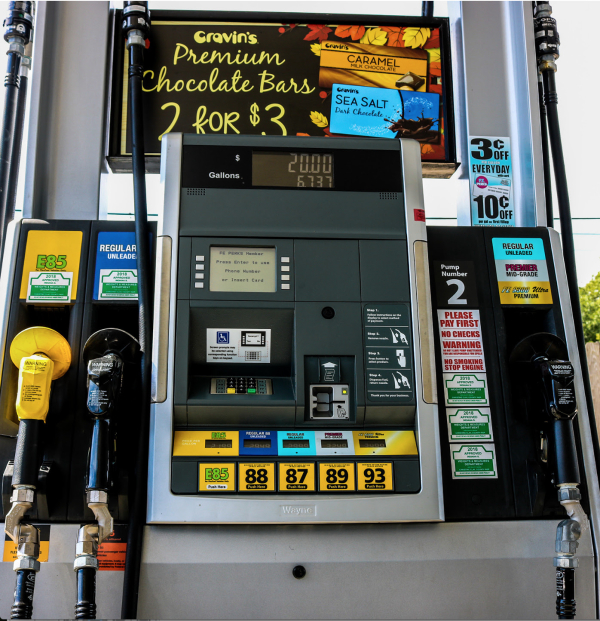Getting Gassed
By Glen Wunderlich
If you have any need for power equipment – be it lawn mowers, trimmers, chainsaws, tractors, snowblowers, generators, or older vehicles, as examples – you may have experienced issues related to ethanol-blended fuels. With the changing of the seasons, Michiganders are prone to fuel-related issues when machines are stored for long periods of time. But, what has changed with the advent of ethanol fuel mixtures common today is the definition of “long term” storage: 30 days or more! If you’ve battled gremlins originating in your fuel tank, here are a few considerations to minimize the possibility of costly maintenance bills.
The term “ethanol-blended fuel,” or E10, refers to fuel that contains 10 percent ethanol and 90 percent gasoline. Although our air is cleaner as a result of reduced hydrocarbon emissions, water that is either introduced with the fuel or forms as a result of condensation can be damaging to fuel systems. On older machines with carburetors, changing over to ethanol fuels can cause gunk to become loosened, thus plugging tiny jets and creating operational failures. The process can also cause “phase separation” wherein water is displaced to the bottom of fuel tanks – and, that’s where things get expensive!
· From the Stihl website: Ethanol attracts and mixes with moisture in the air, causing corrosion to metal components in the fuel system. If enough water is absorbed, the ethanol and water will settle out of the gasoline blend and settle to the bottom of the equipment’s tank. The layer of gasoline left floating on top has a lower octane level than the original ethanol gasoline blend, which can result in unstable engine operation, power loss and major engine failures.
· Since the fuel is often drawn from the bottom of the fuel tank, the engine is drawing in a mixture of ethanol and water with no gasoline and no lubricating oil. This ethanol/water mix is thicker than gasoline and cannot easily pass through the fuel system. This can result in hard starting, unsafe high idle speeds, stalling, and can ultimately lead to engine damage or fuel system failure.
If you are not sure if the fuel is contaminated, pump some into a clear glass container to see if it’s clear. If not, or if it smells sour, it must be completely drained. Change the fuel filter. Next, completely fill the tank with fresh fuel adding a quality cleaner to work on deposits.
It is important to note that no chemical agent or fuel additive can be added to E10 gasoline, in a reasonable quantity, that will fully prevent phase separation or recombine a phase-separated layer.
To minimize storage issues, machines can be run dry and ethanol-free fuel (available locally at select Sunoco filling stations) can be used in conjunction with a quality fuel stabilizer. An excellent product named Motorkote Fuel Optimizer can be found locally at Meijer stores, Menards, or online at www.Motorkote.com – and, it has resolved fuel-related issues for me recently.
STIHL currently recommends that you do not store or use ethanol fuel older than 60 days, and preferably no longer than 30 days, even with a stabilizer.
Stihl MotoMix premixed fuel, which is pre-mixed with STIHL HP Ultra synthetic oil, contains no ethanol and has a storage life of up to two years and is available locally at S&K Farm and Yard on South M-52, Owosso, MI (989) 723-2369, or any authorized Stihl dealer of choice.
As usual, an ounce of prevention is worth a pound of cure.







